An organic compound (A) (molecular formula C6H12O2) was hydrolysed with dil . H2SO4 to give carboxylic acid (B) and an alcohol (C). 'C' gives white turbidity immediately when treated with anhydrous ZnCl2 and conc. HCl . The organic compound (A) is



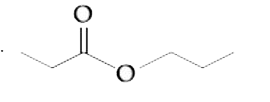
To solve the problem step by step, we need to analyze the information provided about the organic compound (A) with the molecular formula C6H12O2, which is hydrolyzed to form a carboxylic acid (B) and an alcohol (C). The key points to consider are:
1. Understanding the Hydrolysis Reaction:
- The hydrolysis of an ester typically yields a carboxylic acid and an alcohol. Therefore, compound (A) is likely an ester.
2. Identifying Alcohol (C):
- The problem states that alcohol (C) gives immediate turbidity when treated with anhydrous ZnCl2 and concentrated HCl. This is characteristic of a tertiary alcohol, which reacts quickly to form a precipitate.
3. Analyzing the Molecular Formula:
- The molecular formula C6H12O2 suggests that the compound could be an ester formed from a carboxylic acid and a tertiary alcohol.
4. Testing Possible Structures:
- We will consider different structural possibilities for (A) and determine if they yield a tertiary alcohol upon hydrolysis.
Step 1: Identify Possible Esters
- The molecular formula C6H12O2 indicates that (A) could be an ester derived from a carboxylic acid and an alcohol.
Step 2: Consider the Hydrolysis Reaction
- When (A) is hydrolyzed with dilute H2SO4, it will yield a carboxylic acid (B) and an alcohol (C).
Step 3: Determine the Nature of Alcohol (C)
- Since alcohol (C) gives immediate turbidity with ZnCl2 and HCl, it must be a tertiary alcohol.
Step 4: Test the Options for (A)
- Option 1: An ester that yields a 2° alcohol upon hydrolysis. This is incorrect as it does not give immediate turbidity.
- Option 2: An ester that yields a 3° alcohol upon hydrolysis. This is a candidate since it would give immediate turbidity.
- Option 3: An ester that yields a 1° alcohol upon hydrolysis. This is incorrect as it does not give immediate turbidity.
- Option 4: Another ester that yields a 2° alcohol. This is also incorrect.
Step 5: Confirm the Correct Option
- The only option that yields a tertiary alcohol (C) upon hydrolysis is Option 2. Therefore, the organic compound (A) is confirmed to be the ester that produces a tertiary alcohol.
Conclusion:
The organic compound (A) is an ester that, upon hydrolysis, produces a carboxylic acid (B) and a tertiary alcohol (C). The correct answer is Option 2.
- The hydrolysis of an ester typically yields a carboxylic acid and an alcohol. Therefore, compound (A) is likely an ester.
- The problem states that alcohol (C) gives immediate turbidity when treated with anhydrous ZnCl2 and concentrated HCl. This is characteristic of a tertiary alcohol, which reacts quickly to form a precipitate.
- The molecular formula C6H12O2 suggests that the compound could be an ester formed from a carboxylic acid and a tertiary alcohol.
- We will consider different structural possibilities for (A) and determine if they yield a tertiary alcohol upon hydrolysis.
- The molecular formula C6H12O2 indicates that (A) could be an ester derived from a carboxylic acid and an alcohol.
- When (A) is hydrolyzed with dilute H2SO4, it will yield a carboxylic acid (B) and an alcohol (C).
- Since alcohol (C) gives immediate turbidity with ZnCl2 and HCl, it must be a tertiary alcohol.
- Option 1: An ester that yields a 2° alcohol upon hydrolysis. This is incorrect as it does not give immediate turbidity.
- Option 2: An ester that yields a 3° alcohol upon hydrolysis. This is a candidate since it would give immediate turbidity.
- Option 3: An ester that yields a 1° alcohol upon hydrolysis. This is incorrect as it does not give immediate turbidity.
- Option 4: Another ester that yields a 2° alcohol. This is also incorrect.
- The only option that yields a tertiary alcohol (C) upon hydrolysis is Option 2. Therefore, the organic compound (A) is confirmed to be the ester that produces a tertiary alcohol.
The organic compound (A) is an ester that, upon hydrolysis, produces a carboxylic acid (B) and a tertiary alcohol (C). The correct answer is Option 2.
Topper's Solved these Questions
Similar Questions
An organic compound (A) (molecular formula, C4H8O2) was hydrolysed with dilute H2SO4 to give a carboxylic acid (B) nd an alcohol (C). Oxidation of (C) with chromic acid produced (B). Write possible structures of (A), (B) and (C) and give their IUPAC names. write chemical equations involved in the process.
View SolutionAn organic compound (A) (molecular formula C8H16O2) was hydrolysed with dilute sulphuric acid to give a carboxylic acid (B) and an alcohol (C ). Oxidation of (C ) with chromic acid produced (B). (C ) on dehydration gives but - 1 - ene. Write equations for the reactions involved.
View Solution
Knowledge Check
An organic compound having the molecular formula C2H4O2 is
Aformic acidBacetic acidCethyl acetateDpropionic acidAn organic Compound (A) with molecular formula C6H12O2 was hydrolysed with dil. H2SO4 to give an alkene as major product and alcohol as minor product. The structure (A) is:
A B
B C
C D
D
A group C6H12O2 which react with H2SO4 and gives carboxylic acid B and alcohol C. C react with ZnCl2 and give white turbidity readily. Identify the structure of A.
A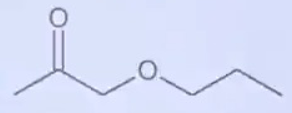 B
B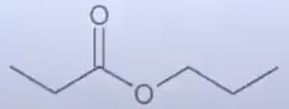 C
C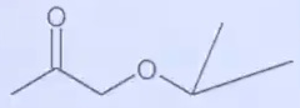 D
D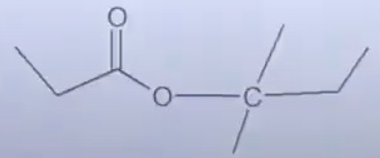
An organic compound (A) (molecular formula C8H16O2) was hydrolysed with dilute sulphuric acid to give a carboxylic acid (B) and an alcohol (C ). Oxidation of (C ) with chromic acid produced (B). (C ) on dehydration gives but-1-ene. Write equations for the reactions involved.
View SolutionAn organic compound (A) (molecular formula C8H16O2) was hydrolysed with dilute sulphuric acid to give a carboxylic acid (B) and an alcohol (C ). Oxidation of (C ) with chromic acid produced (B). (C ) on dehydration gives but-1-ene. Write equations for the reactions involved.
View SolutionThe hydroxyl compound that gives a precipitate immediately when treated with concentrated HCl and anhydrous ZnCl2 is :
View SolutionAn organic compound [A], molecular formula C10H20O2 was hydrolyzed with dilute sulphuric acid to
give a carboxylic acid [B] and an alcohol [C]. Oxidation of [C] with CrO3−H2SO4 produced [B].
Which of the following strucutres are not possible for [A]?
View SolutionAn organic compound having molecular formula C3H7 NO on hydrolysis gives carboxylic acid . Compound (A) on reaction with POCl3 gives cyanide. The structure of compound "A" is
View Solution
